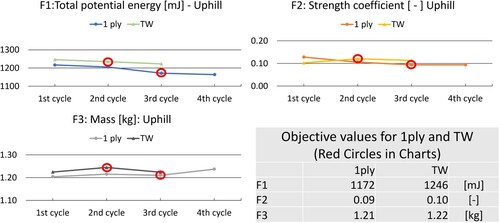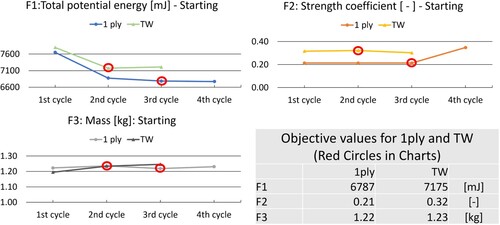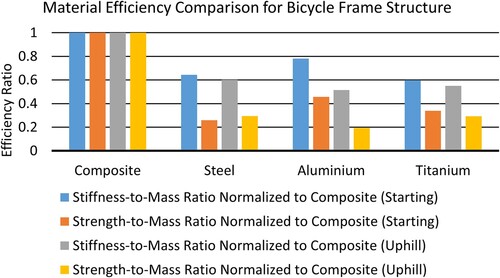Figures & data
Table 1. Parameters of the bicycle frame beam model.
Table 2. Composite material mechanical properties.
Table 3. Starting load case definition (Forces Fx, Fy, Fz [N] and moments Mx, My, Mz [Nmm]).
Table 4. Uphill load case definition (Forces Fx, Fy, Fz [N] and moments Mx, My, Mz [Nmm]).
Table 5. Bicycle frame parameters obtained as a result of cyclic optimisation (Starting LC, 1ply winding).
Table 6. Modified parameters and corresponding objectives (Starting LC, 1ply winding).
Table 7. Isotropic material mechanical properties.
Table 8. Objectives comparison (starting load case).
Table 9. Objectives comparison (uphill load case).






